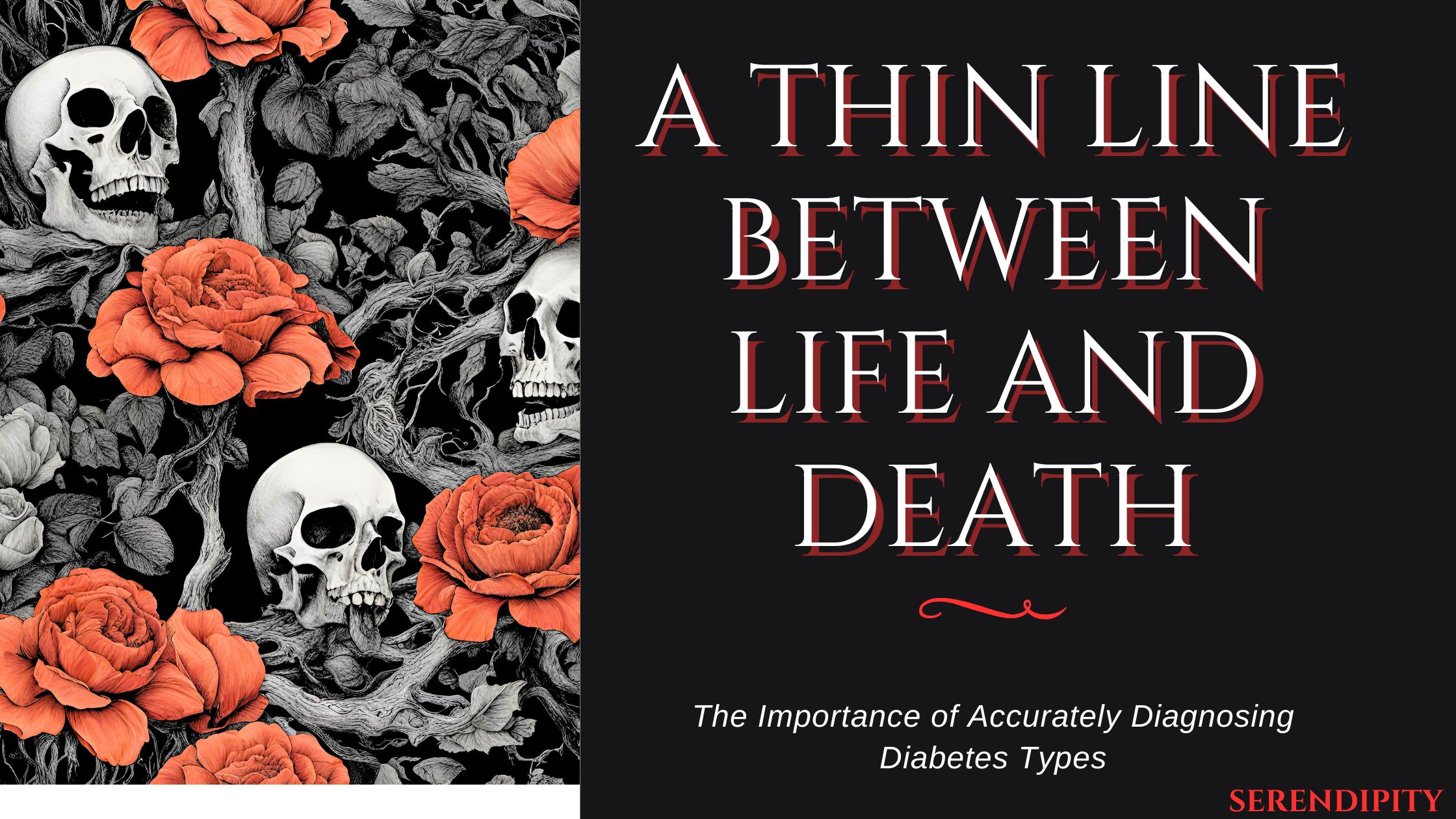
It was a humid afternoon in at the University College Hospital, Ibadan where I was undergoing my internship training. I remember every detail of that day vividly, especially the sombre look on the mother’s face as she held her son’s hand. The boy, around 20 years old, lay almost lifeless in the emergency room, his breathing shallow, and his skin clammy. His blood sugar was over 500 mg/dL, and his mother’s voice cracked as she explained that he had recently been diagnosed with type 2 diabetes by a local clinic. They had given him oral medication to manage it—--no insulin, no other warnings, just some pills and the assurance that he’d be fine.
But he wasn’t fine.
I felt a familiar pit in my stomach. I suspected what was going on, yet the confirmation was heart-breaking: this young man was not a type 2 diabetic. He had type 1 diabetes, a vastly different condition that required immediate and regular insulin therapy. He was in diabetic ketoacidosis (DKA), a life-threatening complication that occurs when the body doesn’t get the insulin it desperately needs to convert glucose into energy. His body was starved, burning fat at an unsustainable rate, leading to dangerously high levels of acids, or ketones, in his blood. As I watched his vitals fluctuate, I realized he had been misdiagnosed, and the resulting consequence could be the loss of his life.
Why Getting It Right Matters
The line between type 1 and type 2 diabetes is not just a clinical classification—it is the line between life and death. Diabetes is often thought of as a single disease, but that notion can be dangerously misleading. While both types share the issue of high blood glucose, their causes, treatments, and progression are vastly different.
In type 1 diabetes, the body’s immune system mistakenly attacks the insulin-producing cells in the pancreas, meaning there is no insulin available to regulate blood sugar. Without insulin, the body simply cannot survive. This is why insulin therapy is essential from the onset.
However, with Type 2 diabetes, the problem is usually due to insulin resistance, meaning the body can produce insulin but cannot use it efficiently. Oral medications or lifestyle adjustments can often manage type 2, and insulin is not typically needed in the early stages.
Misdiagnosing someone as type 1 or type 2 when they have the other form of diabetes can lead to a treatment plan that does not meet their actual medical needs. In a case like my young patient’s, diagnosing him as type 2 delayed the insulin treatment he needed to survive. His body went into crisis mode, spiraling into a state that almost cost him his life.
The Deadly Mistakes of Misdiagnosis
A type 1 patient diagnosed as type 2 may be prescribed oral medications that cannot provide the insulin their body lacks. Over time, as their body is deprived of insulin, they risk developing DKA, a life-threatening condition. DKA is not a slow-developing complication; it can escalate within hours and is often fatal if untreated.
On the other hand, a type 2 patient misdiagnosed as type 1 might be started on unnecessary insulin therapy. This can lead to hypoglycemia (dangerously low blood sugar), which can cause seizures, unconsciousness, and, if not managed quickly, death. Although type 2 diabetes is less immediately life-threatening in most cases, its mismanagement, especially with inappropriate treatments, is dangerous and can lead to long-term complications.
Why This Happens and How It Can Be Prevented
In low-resource settings, where diagnostic tests and specialist referrals are limited, differentiating between type 1 and type 2 diabetes can be a challenge. Clinicians often rely on surface-level symptoms or the patient’s age to make a diagnosis. In Nigeria and other developing countries, adults with diabetes are frequently assumed to have type 2, even though young adults and adolescents may have type 1 or an atypical form, such as latent autoimmune diabetes in adults (LADA), which shares characteristics of both types.
Accurate diagnosis involves specific tests, including C-peptide tests (to measure insulin production) and antibody tests (to identify autoimmune activity). But these tests are expensive and often unavailable, so people are diagnosed based on assumptions and receive treatments that may be dangerously inadequate or inappropriate.
My Young Patient’s Recovery—and My Determination
By God’s grace and quick intervention, we were able to stabilize the young man. But the damage had been done. His body had endured days—if not weeks—of improper management, and he was left with complications that would affect him for years to come. As a doctor, it was one of the most emotionally taxing cases I had to handle. Could this have been prevented?
Yes, we could have prevented it. If he had been accurately diagnosed from the start, he would have had a different outcome, a better chance at a normal life. This experience cemented a truth that I carry with me every day: accurate diagnosis is not just a formality; it is the difference between life and death.
A Call for Awareness and Precision
Misdiagnosing diabetes is not just an error—it’s a risk, a threat to life itself. In Nigeria and other parts of the world where resources are stretched thin, the need for proper diagnosis tools and education is even more critical. Every patient deserves the right to a diagnosis that respects the gravity of their condition. And every doctor deserves the resources and training to make that diagnosis with confidence.
Let us not take these distinctions lightly. Let us remember that every life we touch is precious, and every diagnosis carries the weight of a future—sometimes fragile, sometimes teetering on the edge, but always deserving of our utmost care.